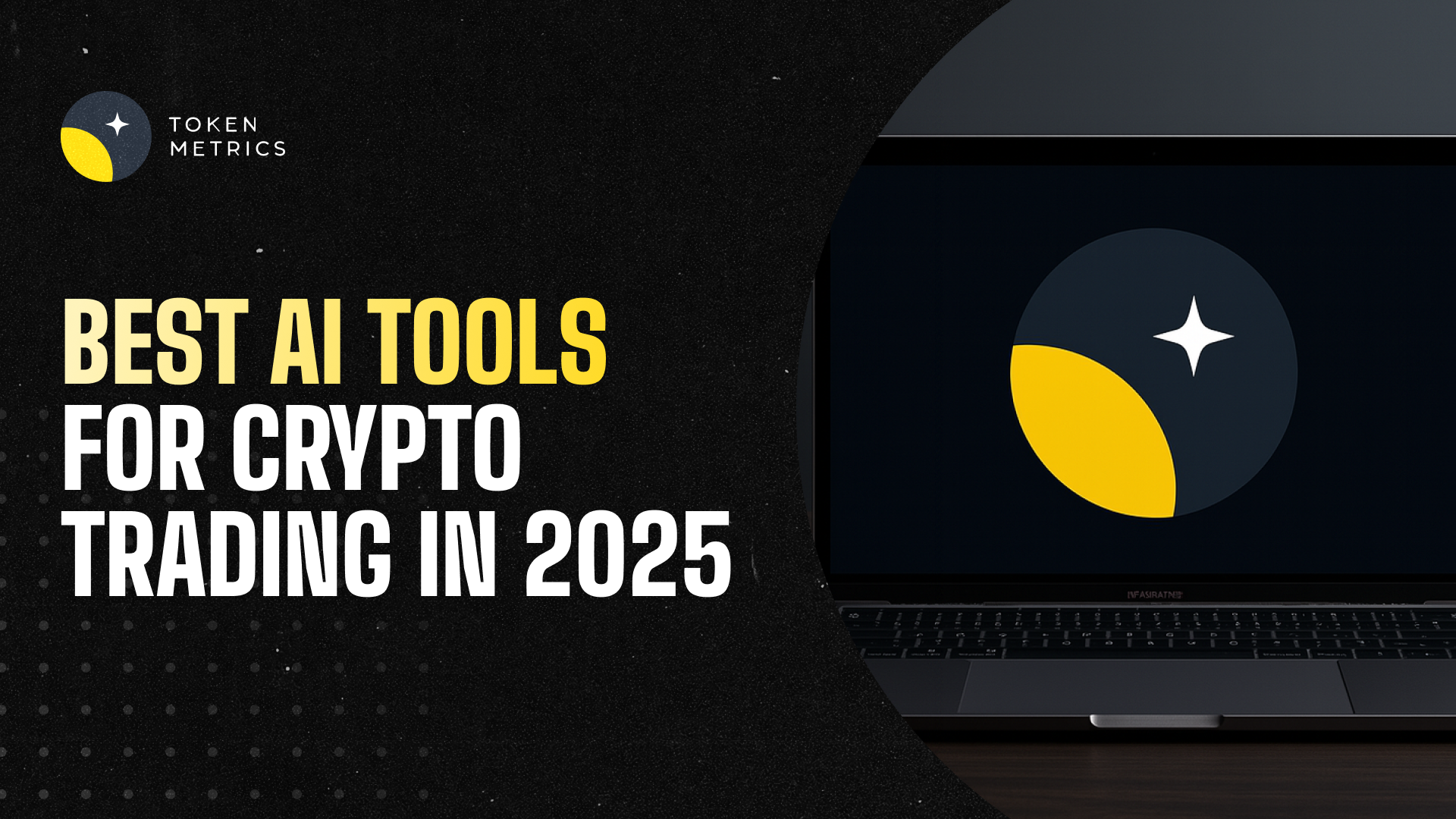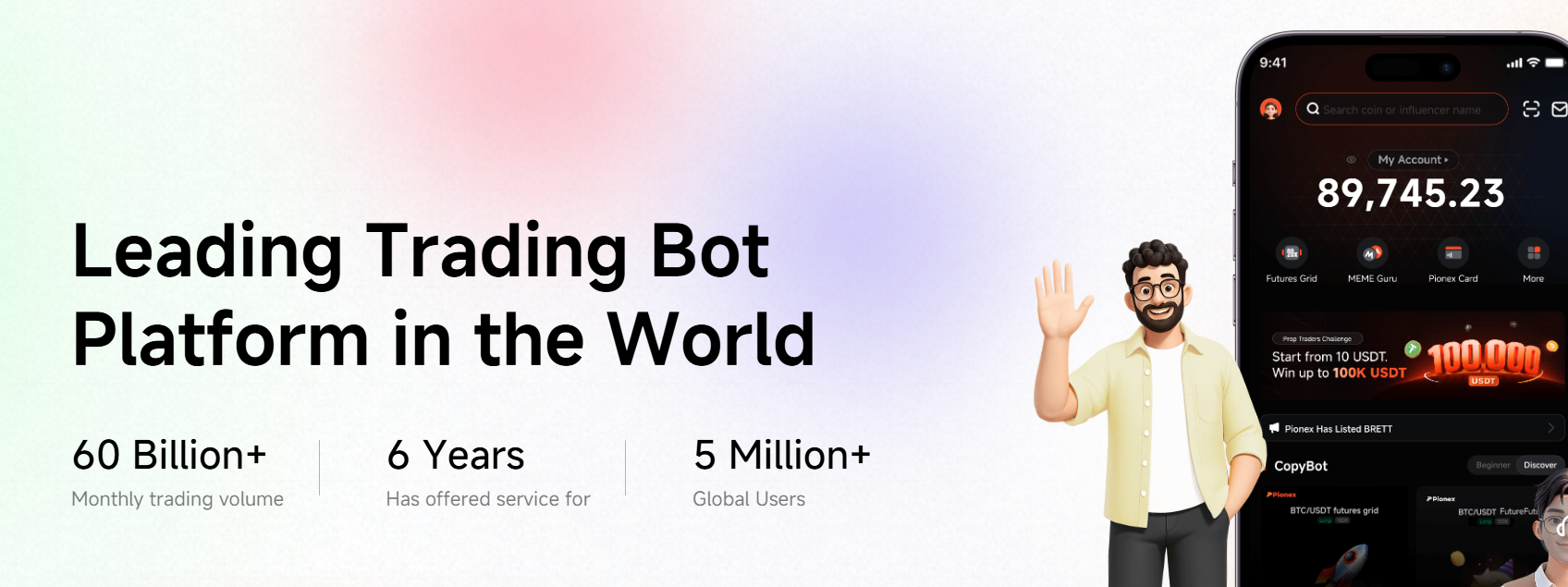
Best AI Tools for Crypto Trading in 2025: Smarter Strategies for Maximum Profits

Click here to trade cryptos at MEXC!
Contact us at promo@tokenmetrics.com for marketing and sponsorship programs.
Introduction: Why AI Is Transforming Crypto Trading
In 2025, cryptocurrency trading has evolved far beyond manual chart analysis and intuition. Artificial Intelligence (AI) is now at the forefront of trading strategies, enabling investors to process massive amounts of data, predict market movements, and make faster, smarter decisions.
AI trading tools have become indispensable for retail and institutional traders alike, offering insights that were once only available to hedge funds with large research teams. This article explores the best AI tools for crypto trading in 2025, with a special focus on how platforms like Token Metrics give traders a competitive edge.
What Are AI Crypto Trading Tools?
AI crypto trading tools use machine learning algorithms, predictive analytics, and natural language processing to analyze market data and provide actionable insights.
These platforms help traders:
- Predict Price Movements: Using historical data and sentiment analysis.
- Detect Emerging Trends: Spotting narratives like AI coins, DeFi, and Layer 2 growth early.
- Automate Trades: Executing strategies faster than manual trading.
- Manage Risk: Offering portfolio rebalancing and stop‑loss recommendations.
In short, AI tools turn complex crypto data into clear, actionable decisions.
1. Token Metrics — The All‑In‑One AI Trading Platform

Best For: Portfolio optimization, coin ratings, and narrative detection
Token Metrics is one of the most advanced AI‑powered crypto platforms in 2025. Designed for both traders and long‑term investors, it uses over 80 data points per token to generate AI‑driven ratings, predictions, and portfolio recommendations.
Key Features:
- AI Coin Ratings: Score cryptocurrencies based on fundamentals, technicals, sentiment, and on‑chain data.
- Narrative Detection: Identify early‑stage trends like AI tokens or real‑world asset tokenization before they go mainstream.
- Portfolio Optimization: Create a personalized, data‑driven portfolio aligned with your goals and risk tolerance.
- Trading Signals & Alerts: Get real‑time updates on bullish/bearish movements.
Why It’s Great:
Token Metrics is more than a tool — it’s a full trading intelligence platform. It helps users discover hidden gems, fine‑tune strategies, and stay ahead of shifting market conditions.
2. CryptoHopper — AI‑Driven Trading Automation

Best For: Automated crypto trading bots
CryptoHopper allows traders to automate their trading strategies using AI‑powered bots. It connects to major exchanges and executes trades based on predefined conditions, reducing emotional trading.
Key Features:
- AI‑Driven Bots: Adapt strategies based on real‑time data.
- Backtesting: Test strategies against historical market performance.
- Social Trading: Copy strategies from experienced traders.
Why It’s Great:
For traders who want hands‑off execution, CryptoHopper provides robust automation paired with AI insights.
3. 3Commas — AI for Portfolio and Trade Management

Best For: Multi‑exchange trading and smart portfolio management
3Commas combines AI‑driven analytics with smart trading tools, allowing users to execute trades across multiple exchanges.
Key Features:
- AI Portfolio Management: Optimize holdings using automated rebalancing.
- Trading Bots: Configure AI bots for spot, futures, or options markets.
- SmartTrade Terminal: Advanced order types for precision trading.
Why It’s Great:
3Commas is ideal for active traders managing multiple accounts across different platforms.
4. Pionex — AI‑Powered Grid Trading

Best For: Grid and arbitrage trading
Pionex specializes in AI‑powered grid trading, which profits from market volatility.
Key Features:
- AI Grid Bots: Automate buy‑low, sell‑high strategies.
- Arbitrage Bots: Capitalize on price differences across exchanges.
- Low Fees: Competitive rates for active traders.
Why It’s Great:
Pionex helps beginner and intermediate traders profit from sideways markets using low‑maintenance AI bots.
Click here to trade cryptos at MEXC!
Contact us at promo@tokenmetrics.com for marketing and sponsorship programs.
5. Numerai Signals — AI for Predictive Trading
Best For: Crowdsourced AI predictions
Numerai Signals collects machine learning models from data scientists worldwide to generate highly predictive trading insights.
Key Features:
- Crowdsourced AI Models: Benefit from collective intelligence.
- Predictive Signals: Forecast market moves using advanced algorithms.
- Quantitative Trading: Build data‑driven strategies with institutional‑grade tools.
Why It’s Great:
Numerai offers unique crowdsourced intelligence, making it an attractive tool for data‑driven traders.
How to Choose the Right AI Trading Tool
When selecting a platform, consider:
- Your Goals: Are you looking for portfolio optimization, day trading, or automation?
- Ease of Use: Some tools require technical expertise, while others (like Token Metrics) are beginner‑friendly.
- Data Sources: Ensure the tool uses reliable, real‑time market data.
- Integration: Check if it works with your preferred exchanges or wallets.
Combining AI Tools for Maximum Impact
The best approach in 2025 isn’t using just one tool — it’s combining multiple platforms:
- Use Token Metrics for narrative detection and portfolio building.
- Automate execution with CryptoHopper or 3Commas.
- Apply Pionex bots for volatility trading and arbitrage opportunities.
This hybrid approach creates a comprehensive AI‑driven trading strategy.
Risks of AI Trading Tools
While AI can enhance trading, it isn’t foolproof:
- Overreliance on Bots: AI models can fail during extreme volatility.
- Data Quality Issues: Poor‑quality data leads to inaccurate predictions.
- Security Risks: Using third‑party tools requires strong cybersecurity practices.
Using Token Metrics’ AI analytics helps mitigate these risks by providing transparent, multi‑factor coin ratings.
Conclusion
AI is transforming how crypto trading works in 2025. From narrative detection to automated execution, these tools give traders the ability to make smarter, faster, and more profitable decisions.
Token Metrics leads the way, offering AI‑powered coin ratings, trend detection, and portfolio optimization — making it the ideal platform for traders and investors aiming to stay ahead in a volatile market.
In crypto, information is power — and with the right AI tools, you can turn that information into consistent profits.
Click here to trade cryptos at MEXC!
Contact us at promo@tokenmetrics.com for marketing and sponsorship programs.

.svg)

Create Your Free Token Metrics Account

.png)




%201.svg)
%201.svg)


%201.svg)









.svg)




.png)